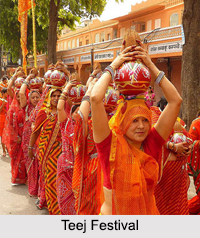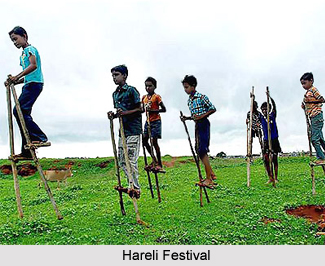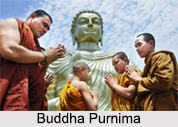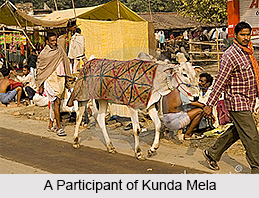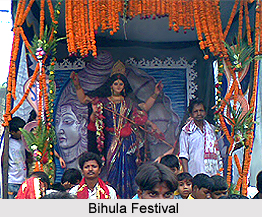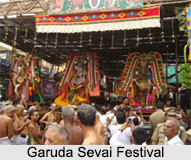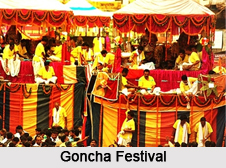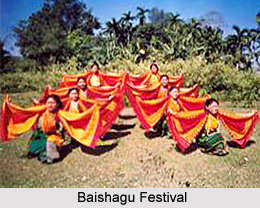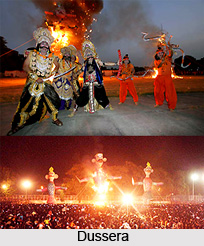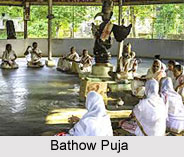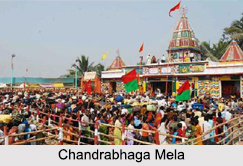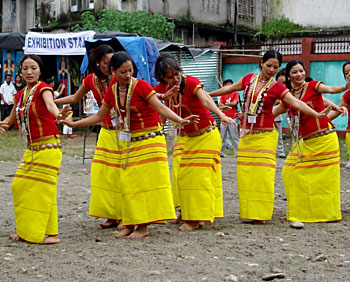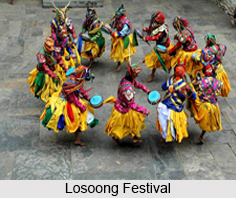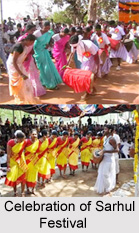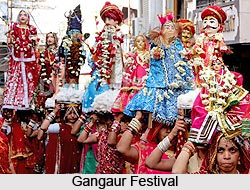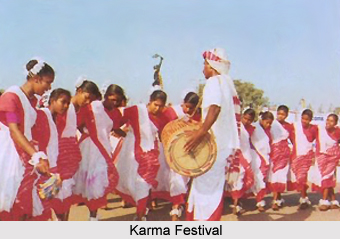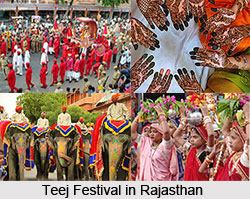 Marriage is considered one of the most sacred relations in India and the festivals of Teej celebrate that spirit. Teej is a fasting festival for Hindu women. It takes place on the third day of the Shukla Paksha of the Sawaan month of the Hindu calendar, which normally falls between late July and early September. This festival is dedicated to Goddess Parvati and celebrates her return to Lord Shiva. Teej is in praise of marital bliss and the well-being of spouse and children. Falling in the Hindu month of Bhado, Teej also celebrates the arrival of the long awaited monsoon after a brutally hot summer. The festival is a three day celebration which includes both rigid fasting and scrumptious feasting. All married and single women, therefore, pray to Goddess Parvati for a blissful married life on this day. While married women pray for the well being, longevity and prosperity of their spouse and also for self purification, the unmarried women pray to Goddess Parvati to help them find a wonderful life partner. Young girls arrange for swings (jhoola), tie them to trees and decorate them with flowers.
Marriage is considered one of the most sacred relations in India and the festivals of Teej celebrate that spirit. Teej is a fasting festival for Hindu women. It takes place on the third day of the Shukla Paksha of the Sawaan month of the Hindu calendar, which normally falls between late July and early September. This festival is dedicated to Goddess Parvati and celebrates her return to Lord Shiva. Teej is in praise of marital bliss and the well-being of spouse and children. Falling in the Hindu month of Bhado, Teej also celebrates the arrival of the long awaited monsoon after a brutally hot summer. The festival is a three day celebration which includes both rigid fasting and scrumptious feasting. All married and single women, therefore, pray to Goddess Parvati for a blissful married life on this day. While married women pray for the well being, longevity and prosperity of their spouse and also for self purification, the unmarried women pray to Goddess Parvati to help them find a wonderful life partner. Young girls arrange for swings (jhoola), tie them to trees and decorate them with flowers.
Teej is not a pan-Indian festival. While it is an important festival in Rajasthan, Teej is also celebrated with a lot of fervor and zeal in the north Indian states of Uttar Pradesh, Haryana, Madhya Pradesh, Gujarat and Bihar. It has a broader significance in the western Indian arid state of Rajasthan as it is observed to provide relief from the scorching heat of summer. Rajasthan Tourism organizes a Teej fair called "Sawan Mela" every year to showcase the customs and traditions of the state during this time. Since, rains means greenery and beauty all around in our country largely dependent on rains for irrigation, the festival is also called "Hariyali Teej". People dress up in green-coloured clothes to celebrate the festival in its true spirit.
History and Origin of Teej
It is believed that the name of this festival comes from a small red insect called "Teej" that emerges from the earth during the monsoon season. Hindu mythology has it that on this day, Parvati came to the Shiva"s abode, marking the union of the husband and wife.
Teej symbolizes the reunion of Shiva and his wife Parvati. It exemplifies the sacrifice of a wife to win the mind and heart of the husband. According to Hindu mythology, after the death of his first wife Goddess Sati, Lord Shiva withdrew himself from the virtues of love. According to myths, Parvati carried out a rigorous fast for 108 years to prove her love and devotion for Shiva, before he accepted her as his wife. Some scriptures say that she was born 107 times before she was reborn as Parvati, and at her 108th birth she was granted the boon to be the wife of Shiva because for her long penance and perseverance over many births. Hence, Teej is celebrated to honor the devotion of Parvati, who is also known as "Teej Mata", by those who observe this auspicious day when women seek her blessings for a happy married life and a good husband like Shiva.
Significance of Teej
The importance of Teej is mainly two-fold: First, as a festival for women, Teej celebrates the victory of a wife"s love and devotion towards her husband - an important factor in Hinduism - symbolized by the union of Shiva and Parvati.
Second, Teej ushers in the advent of the monsoons - the season of rains bringing in a reason to celebrate when people can take a break from the sweltering heat and enjoy the swing of the monsoon - "Sawan ka Jhoola". Besides, it`s an occasion for married women to visit their parents and return with gifts for their in-laws and spouse. So, Teej provides an opportunity to renew family bonds.
Celebrations of Teej
While fasting is central to Teej, the festival is marked by colorful celebrations, especially by the womenfolk, who enjoy swing rides, song and dance. Swings are often hung from trees or placed in the courtyard of homes and decked with flowers. Young girls and married women apply "Mehendi" or henna tattoos on this auspicious occasion. Women wear beautiful sarees and adorn themselves with jewelry, and visit temples to offer their special prayers to Goddess Parvati. A special sweet called "ghewar" is prepared and distributed as "Prasad" or divine offering.
A large Teej procession winds its way through the old city in Jaipur, in which a brightly adorned idol of Goddess Parvati is placed on a palanquin. The Palanquin of Goddess Parvati is carried by 8 men dressed in red color. Beautifully caparisoned elephants, camels, bullock carts and chariots add a lot of charm and splendor to the procession. Thousands of devotes are part of this procession which is carried out for two consecutive days. Fairs are one of the prime highlights of the festival. The fairs have a number of foods and handicraft stalls and comprises of singing, dancing, devotional music and many other attractions.
Most married women go to their parental homes to celebrate the festival, especially during the first year of marriage. The women dress up in new clothes, usually gifted by their parents, and then gather together to fast, have fun and offer prayers to the Goddess Parvati, whose love and devotion to her husband, Lord Shiva, is considered an exemplar for others to follow. Engaged women also receive gifts from their in-laws, which are symbols of their future married life. These include clothes, jewellery, bangles, Mehendi, cosmetics and sweets.
Another important ritual of the festival is to worship the Nyagrodha tree or Vat Vriksha, which is considered extremely auspicious as its branches symbolize knowledge. Swings are tied to this tree and women sing and dance while enjoying the showers.
Teej is not just a festival. It is an opportunity to forget all the worries, thank God for the good things in life and to just celebrate being in love. Teej in Rajasthan mirrors the cultural belief of India, which looks at the institution of marriage as sacrosanct.
